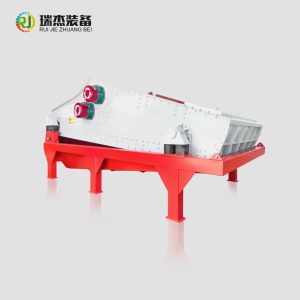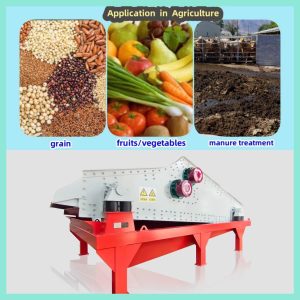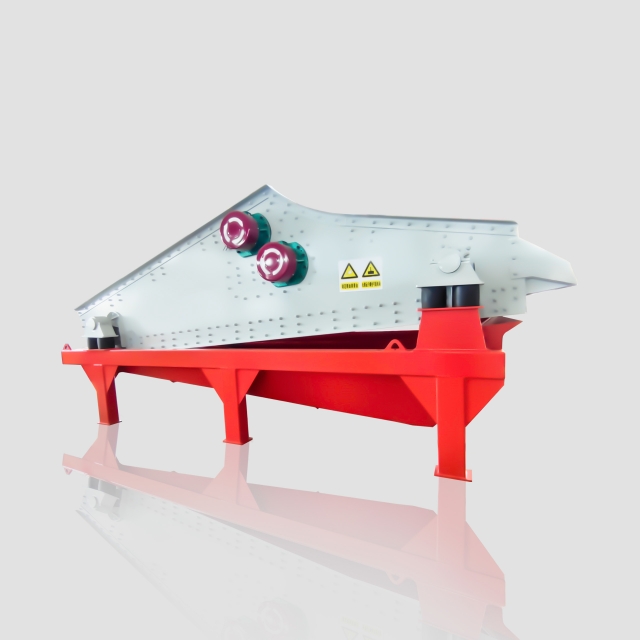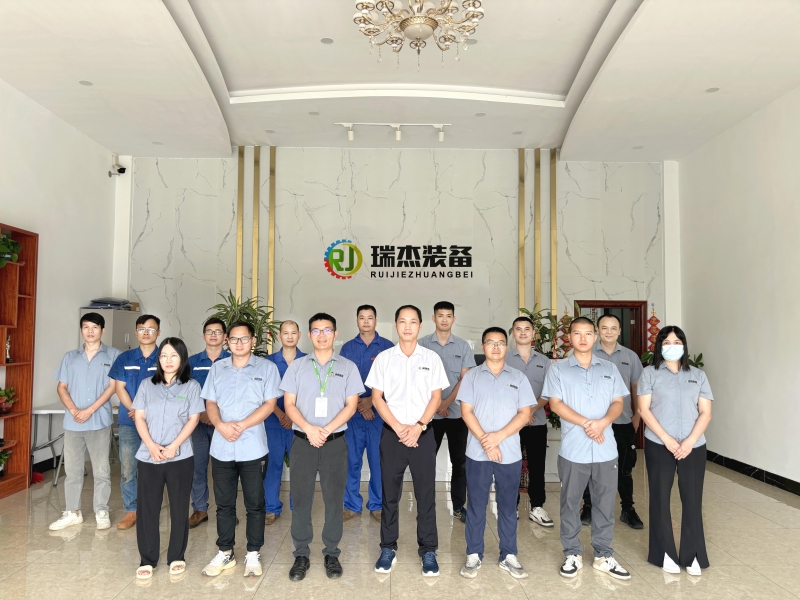Vibrating screen, is an advanced equipment integrating functions such as dewatering, desliming, and classification, applicable for aggregates, coal, plastics, food processing and other processes. But how does it serve as agricultural machinery? Let’s delve it.
Vibrating Screen Design
The vibrating screen, or the vibrating dewatering screen, mainly consists of core components such as the screen box, vibrating motors, screen mesh, and rubber spring, side plates, support beams. The large side plates are made of high-strength and high-toughness steel plates; the support beams are made of large-diameter seamless pipes, featuring high strength and high toughness; The steel components are fabricated by combining riveting and welding.
Vibrating Screen Working Principle
The exciting force generated by the vibrating motors causes the screen box to vibrate at high frequencies. As a result, materials continuously jump and move on the screen surface, enabling the separation of water from solid particles and the classification of materials of different particle sizes. Ruijie screen mesh is made of polyurethane materials, features excellent abrasion resistance and elasticity, effectively extending the screen equipment’s service life and reducing maintenance costs.
Vibrating Screen Application In The Agriculture Field.
Ruijie vibrating screen can serve as agricultural machinery in the agriculture field, for example:
1. Grain Crop Processing
- Grain Dewatering:
Used for primary dewatering of newly harvested moist grains (e.g., rice, wheat, corn). For example, rice with a high moisture content (25%–30%) can be preliminarily dried to 18%–20% moisture via a vibration dewatering screen, reducing subsequent drying costs and facilitating short-term storage or transportation. - Seed Grading:
Sorts seeds by size and plumpness (e.g., soybeans, cotton seeds), removing empty shells, broken grains, and impurities. The vibrating action also eliminates soil or dust adhering to seeds, improving seed purity.
2. Economic Crop Processing
- Fruit and Vegetable Processing:
Removes surface moisture after washing fruits (e.g., grapes, blueberries) or vegetables (e.g., potatoes, carrots), enabling packaging, cold storage, or deep processing (e.g., freeze-drying, pickling). For instance, dehydrated potatoes have reduced transportation decay risks. - Chinese Herbal Medicine Processing:
Used in Chinese herbal medicine processing to screen and dry newly harvested herbs (e.g., Salvia miltiorrhiz, Astragalus membranaceus, Glycyrrhiza uralensis), removing soil and preventing mildew.
3. Livestock Farming and Feed Processing
- Manure Treatment:
Performs solid-liquid separation on livestock manure (e.g., pig/cow dung). The screened solid residue can be made into organic fertilizer, while the liquid part is further processed for biogas or liquid fertilizer. High-frequency vibration enhances separation efficiency and reduces downstream processing loads. - Feed Classification:
Screens mixed feeds (e.g., pellets, powders) to remove agglomerates or oversized particles, ensuring uniform particle size. It also removes excess moisture from feeds to prevent mold growth.
4. Deep Agricultural Processing
- Starch Processing:
In sweet potato/potato starch production, dewatering screens separate starch milk into wet starch (moisture content reduced to 40%–50%), facilitating subsequent drying. - Distiller’s Grains Treatment:
Dewaters wet distiller’s grains (byproducts of brewing) to recover solid materials for feed production and reduce wastewater discharge.
Advantages of Vibrating Screens in Agriculture
- High-Efficiency Dewatering:
Utilizes vibration acceleration from vibration motors to rapidly move and dehydrate materials, with a processing capacity of ten to dozens of tons per hour, and even over one hundred tons—far more efficient than natural draining. - Strong Adaptability:
Adjustable vibration frequency, amplitude, and screen inclination suit materials with varying humidity and particle sizes.
Polyurethane screen is resist corrosion and wear, ideal for long-term agricultural use. - Multi-Functional Integration:
Combines dewatering and grading (e.g., separating impurities and grain sizes simultaneously), reducing equipment costs. - Energy-Saving and Low Maintenance:
Lower energy consumption compared to centrifugal vibrating equipment, with simple maintenance, only requires periodic screen replacement.
Typical Application Scenarios
- Peanut Post-Harvest Processing
After harvesting, peanuts with soil and high moisture are processed by a vibration dewatering screen to remove soil and reduce moisture for easing sun-drying or mechanical drying. - Livestock Manure Management
Cow/sheep manure is separated by a vibrating dewatering screen into solid organic fertilizer (30%–40% dry matter) and liquid for biogas fermentation, achieving resource recycling. - Vegetable Washing Lines
Washed vegetables are dehydrated to <3% surface moisture, meeting packaging standards and minimizing transportation water loss.
Conclusion
Vibration dewatering screens are versatile agriculture equipment in agriculture, enhancing efficiency and quality in processing crops, livestock waste, and agricultural byproducts. By matching equipment parameters to specific material characteristics, farms and processing plants can optimize resource utilization and reduce operational costs.












